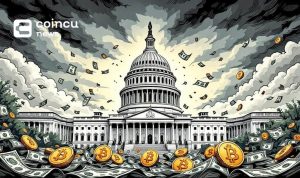- Fed’s new policy framework updates inflation strategies post-COVID-19.
- Review focuses on employment, inflation, and macroeconomic shifts.
- Cryptocurrency markets react to changing macro environment.
Jerome Powell, Chair of the Federal Reserve, announced a significant policy framework shift on May 15 at the Thomas Laubach Research Conference, citing notable changes in economic conditions since 2020.
This revision is pivotal for financial markets, influencing interest rates and inflation outlook, leading to significant responses from cryptocurrency markets.
Fed’s Policy Changes Drive Market Reactions
Federal Reserve Chair Jerome Powell’s announcement indicated a policy review focused on inflation and employment strategies, reflecting the profound economic changes since 2020. The review involves Federal Reserve officials, including regional bank presidents and board members.
The policy shift signals potential changes in interest rate strategies, impacting liquidity and risk allocation in cryptocurrency markets. Cryptocurrencies like Bitcoin and Ethereum are directly influenced by these macroeconomic adjustments.
Cryptocurrency markets and stakeholders reacted to Powell’s announcement. Statements from financial leaders emphasize the implications for risk assets, while early discussions in community channels express concerns over possible market volatility.
Bitcoin Dynamics Amid Fed’s Economic Strategy Shift
Did you know? The Federal Reserve’s dovish pivot in 2020, amid the COVID-19 response, significantly boosted Bitcoin and Ethereum as liquidity flowed into riskier assets.
Bitcoin (BTC) is currently priced at $103,011.30, with a market cap of $2.05 trillion. It holds 61.95% market dominance. The trading volume over 24 hours is $45.44 billion, a 9.75% reduction. In recent weeks, Bitcoin showed a mix of price fluctuations, marking a 4.62% rise over 90 days. Data as of May 15, 2025.

Coincu’s research team suggests that ongoing policy revisions may lead to heightened volatility in crypto markets. Historical trends indicate that shifts in liquidity and monetary policy significantly impact Bitcoin’s price dynamics and investor sentiment.























